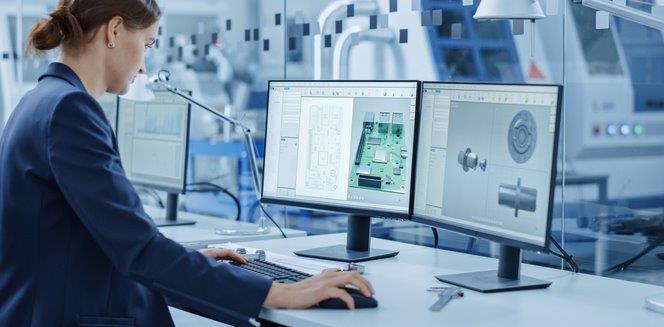Automotive Software To Reshape The Stain Industry With Innovation Agility And Improved Technology

10 Mar
2021
It is a period of intense change for the automotive industry. Over the past few years, technology has evolved and the automotive industry is transformed by next-generation products and business models such as ride-hailing and shared ownership.
Digitization and connectivity are redefining the entire concept of transportation. New and existing market players have invested in the emerging technology to maintain their foothold in the market. As a result, the demand for automotive software for performing computer-based in-vehicle operations has boosted. According to a report published by Allied Market Research, the automotive software market is estimated to reach $43.5 billion by 2027, growing at a CAGR of 14.5% from 2020 to 2027.
In-vehicle operations such as infotainment, telematics, powertrain, advanced driver assistance system (ADAS), and communication have changed the automotive industry as we know it. The collaboration of multinational conglomerates and cutting-edge startups have redefined the way people interact with their vehicle. Moreover, the touch of personalization and increasing demand for ADAS have gained popularity in the automotive industry and automotive software is the back of every futuristic innovation. Here are the prime trends in the automotive industry that depend on automotive software:
- Electric and driverless cars
For years, the internal combustion engine has been a replaceable part of the automotive industry. However, the negative impacts on the environment and increase in consumer concerns resulted in the ever-increasing popularity of fully-electric and hybrid cars. The improvements in battery technology and expanding charging infrastructure have supported this trend.
Apart from this, customers expect more for ADAS. Major automotive companies such as Tesla have offered driverless cars that take the wheel any time the driver wishes. The surge in investments for improving autonomous technology has increased the demand for automotive software.
- Shared mobility
Companies such as Uber and Lyft have changed the way people look at automobiles. Although the concept of shared mobility is relatively new, the demand for car-pooling apps has increased. As the technology continues to support such trends, the consumers would seek new ways to save money and opt for car-pooling apps such as BlaBlaCar. What’s more, it has changed the expectations of car ownership and even challenged the purpose of an automobile.
- Increased dominance of industry entrants
The automotive industry is no longer hail to the market giants. The advent of Tesla, its innovative technology baffled the existing market players and took advantage of the wave of electrification. Several companies such as Tesla have now aim to enter the automotive industry with cutting-edge in-vehicle technology.
- Innovation agility
Even the most successful automotive manufacturer has invested a colossal amount of money in adjusting their R&D processes to adapt to the changing consumer demands. Doing so, companies have partnered with vendors outside the automotive industry and increasing the use of platforming.
The wave of technology has changed the staid automotive industry and brought a balance between software and hardware. For years, the automotive industry relied on good hardware and the quality of the engine. However, today’s consumers demand state-of-the-art technology integrated with the vehicle as well. Thus, the automotive software market has become more prominent than ever.

Koyel Ghosh
Author’s Bio- Koyel Ghosh is a blogger with a strong passion and enjoys writing in miscellaneous domains, as she believes it lets her explore a wide variety of niches. She has an innate interest in creativity and enjoys experimenting with different writing styles. A writer who never stops imagining, she has been serving the corporate industry for the last five years.
The Concept Explained- the Role of Differential Assembly, Starter Motor and, Bevel Gear in an Automobile
Avenue: Entire Library membership of Allied Market Research Reports at your disposal
- Avenue is an innovative subscription-based online report database.
- Avail an online access to the entire library of syndicated reports on more than 2,000 niche industries and company profiles on more than 12,000 firms across 11 domains.
- A cost-effective model tailored for entrepreneurs, investors, and students & researchers at universities.
- Request customizations, suggest new reports, and avail analyst support as per your requirements.
- Get an access to the library of reports at any time from any device and anywhere.
Related Post
-
How are Submarine Cables Transforming Global Connectivity with Enhanced User Experience?
-
Endoscopy Procedures: Transformations in Techniques and Applications
-
AI-Powered Video Analytics: How the Product Actually Works for enterprises
-
Painting Robots: Transforming Precision Coating and Creative Applications
-
Innovations in Pharmacovigilance Systems Advancing Patient Safety
-
Understanding Edge Security: Keeping Data Safe Near the Source
-
Exploring the Use and Advancements of 3D Laser Scanners in Professional Applications
-
Reinforcing Industrial Controls with Smarter Tools and Training








